In March, the roof was raised on the West Pavilion at the Royal Exhibition Building (REB) in preparation for the spectacular craning-in of lift shaft and staircase segments last month. The lift and stairs will enable the public to take in the view from the reinstated 360-degree Dome Promenade taking shape above — all part of the sequence of Lovell Chen-designed interventions for Museum Victoria’s REB Protection and Promotion Project.
While the roof was on the ground, works were undertaken to prepare it. Internal frame modifications were made to accommodate the top of the new lift shaft, the lead ridge capping was repaired, festoon lighting removed and the exterior repainted. With the roof off, the walls of the pavilion were protected by a temporary roof structure.
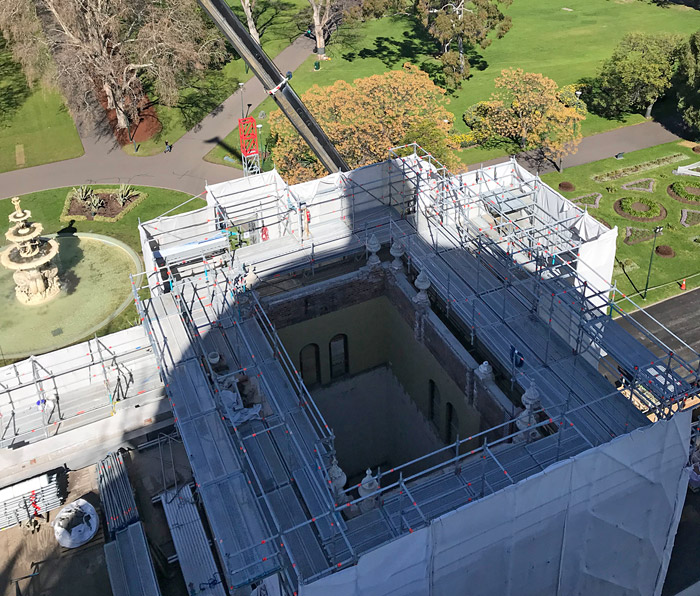
[ The shadow of the Dome looms over the West Pavilion ]
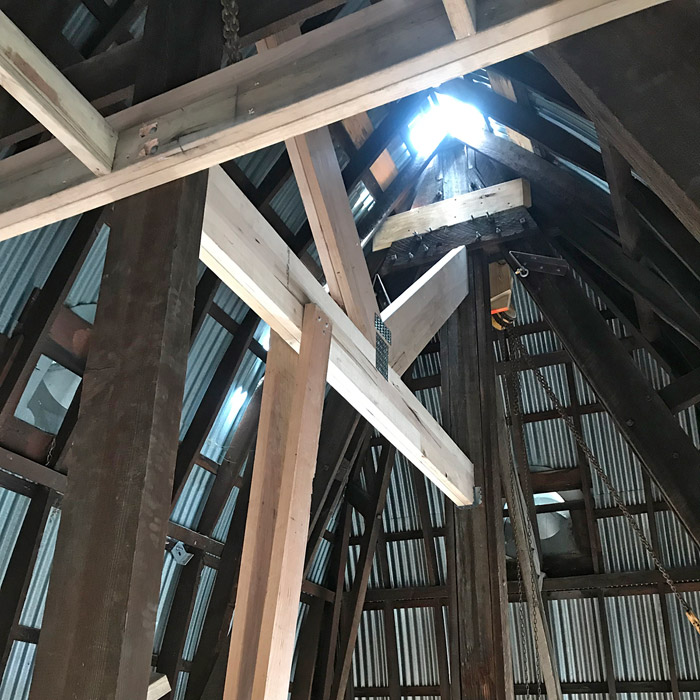
[ Frame modifications in the roof of the West Pavilion, carried out on the ground ]
Precast concrete panels for the lift shaft were assembled off-site into eight square-section units ready for craning into position. Each unit included temporary work decks inside the shaft, designed to assist in the installation of the steel stair and the final grouting of the shaft.
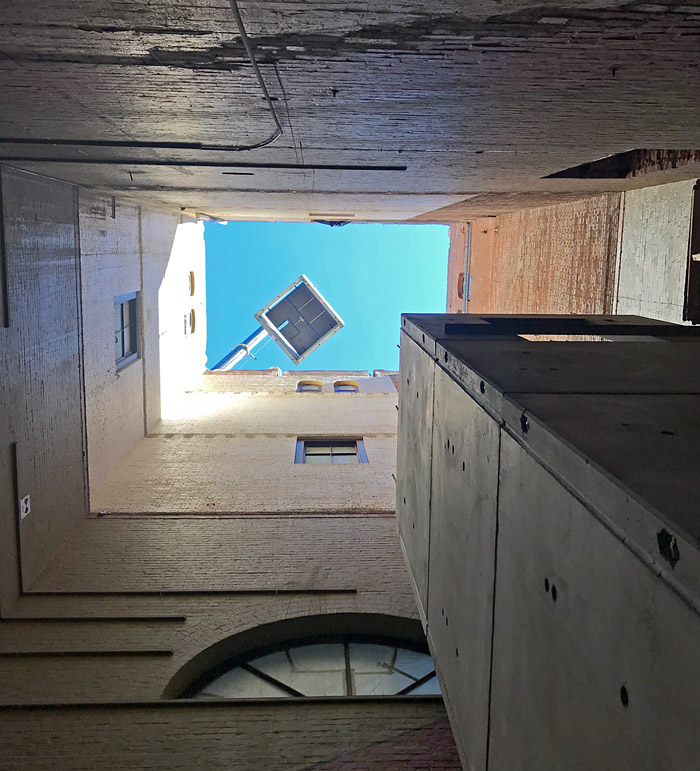
[ Precast concrete units craned into the Pavilion to form the lift shaft and stair stability core ]
The pre-painted mild steel staircase was delivered to site in three segments. The grey areas are undercoat and the final finish is black. The public faces of the treads, risers and landings were left for hand painting after installation, with grit to be added to the paint for a non-slip finish.
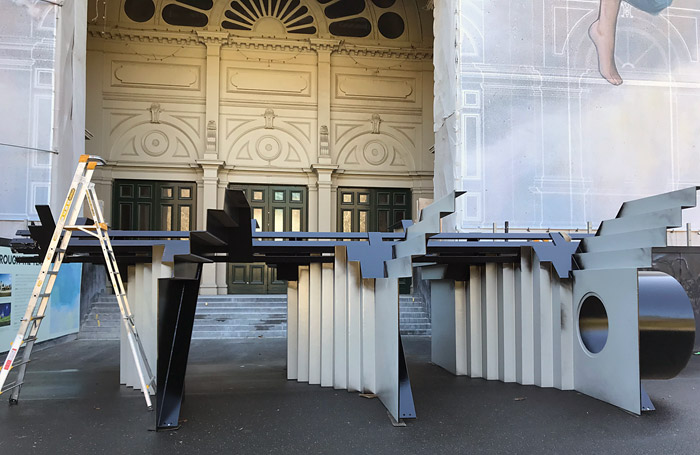
[ Staircase segment, with cylindrical viewing port (at right) for archaeology in the Pavilion floor ]
In a very delicate operation, each stair segment was lifted into the pavilion using two cranes — one doing the main lift from the top of the segment, the other attached to the base, helping prevent swinging motion and ground scrape as the segment was brought upright. A boom crane was deployed to adjust the top crane’s attachment to get the centre of gravity right.
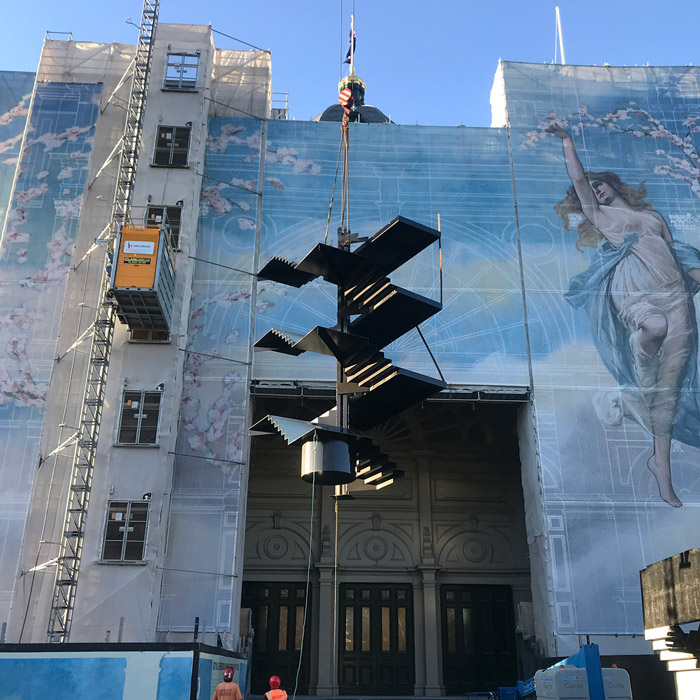
[ The first stair segment is craned in ]
A 50mm gap is maintained around the perimeter of the stair, keeping it away from the Pavilion walls, which vary in texture and detail. The sizes of the steel landings also vary, as the walls step outwards as they rise. To secure and support the staircase, the landings are bolted to the lift shaft core, with additional wall attachments at rear corners. There are many more landings than lift shaft openings — the lift will stop at ground, mezzanine, maintenance and lower promenade level. The upper promenade is reached by a rooftop stair from the lower promenade.
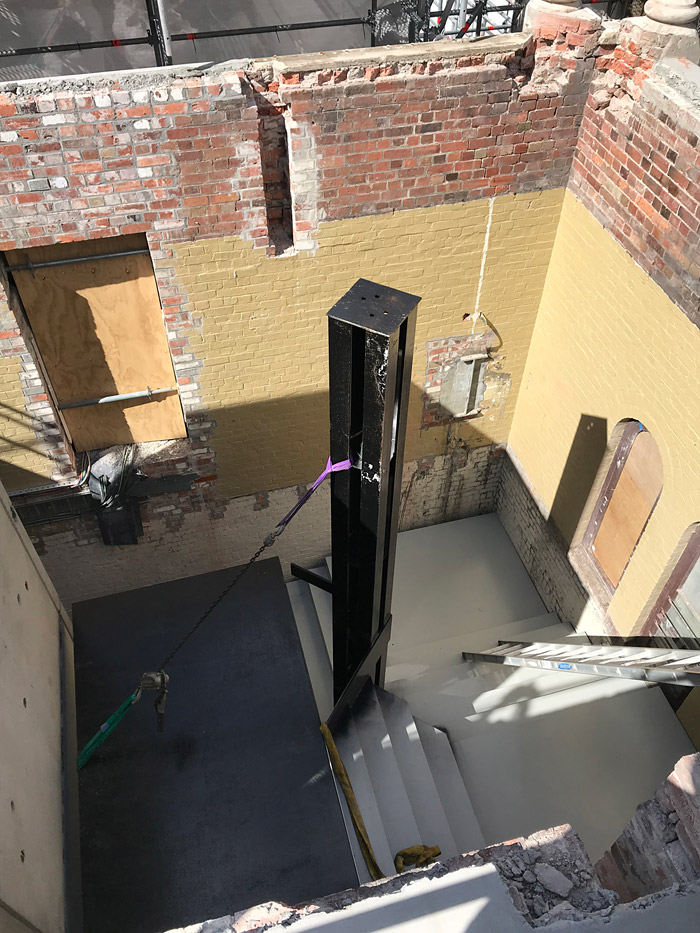
[ Landing installation ]
With the lift shaft and staircase installed, the Pavilion roof can now also be craned back into position: a somewhat nail-biting moment, but very successfully achieved.
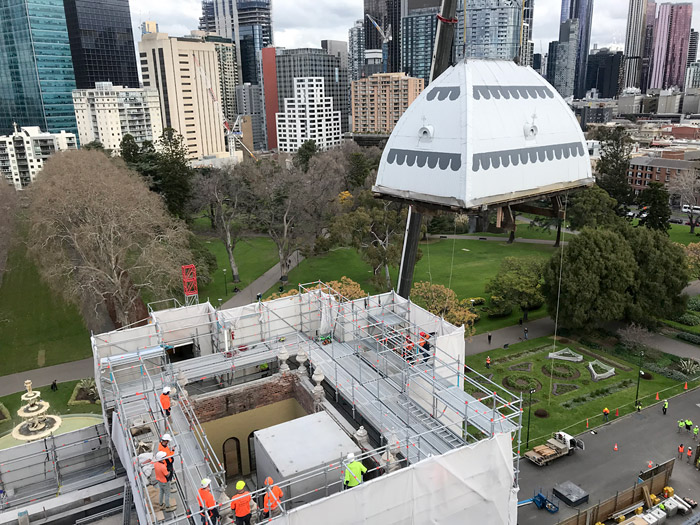
[ The Pavilion roof returns, raised by a 100 tonne crane ]
The Commonwealth-funded Royal Exhibition Building Protection and Promotion Project is being delivered by Museums Victoria under the governance of the Department of the Environment and Energy, Heritage Victoria and Creative Victoria. The redevelopment includes conservation works to the south facade and the dome drum.
[ photos: Lovell Chen ]


